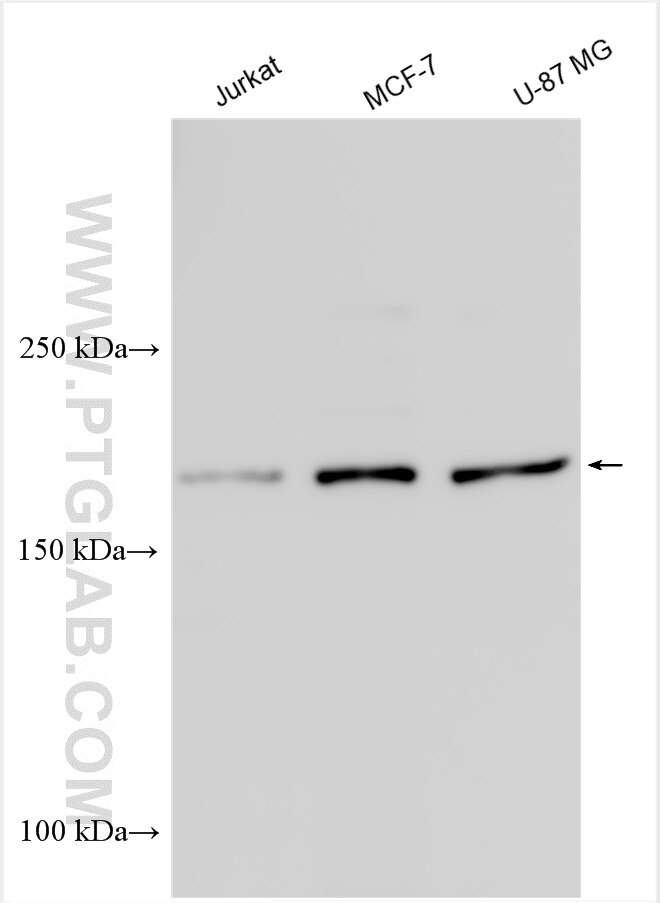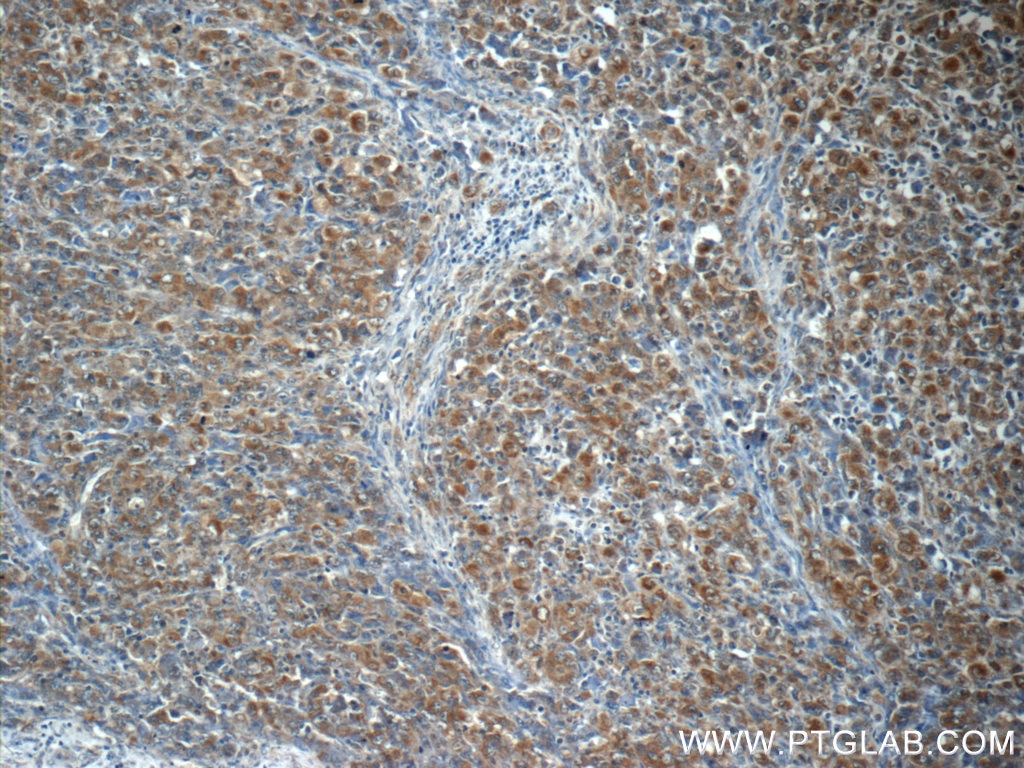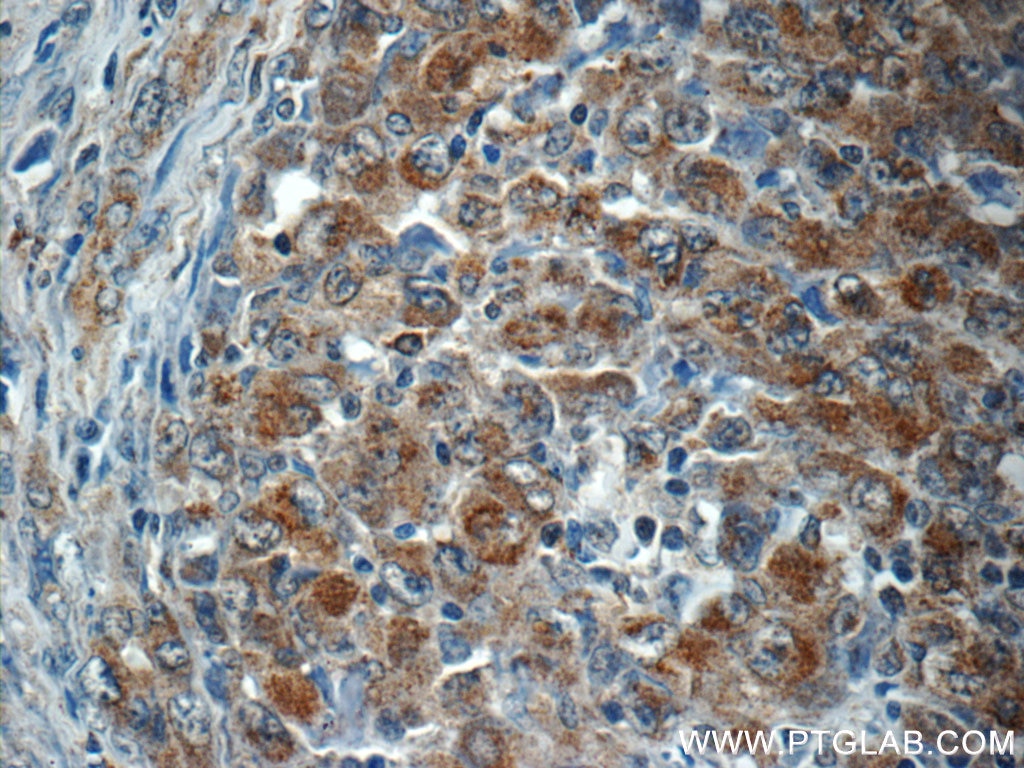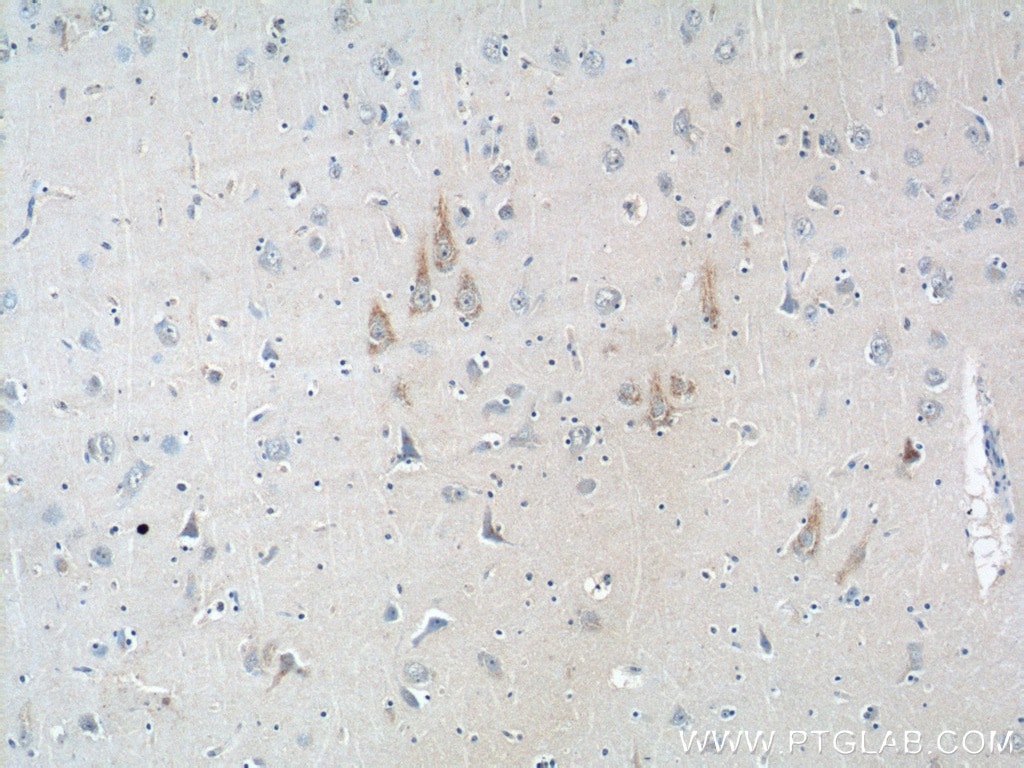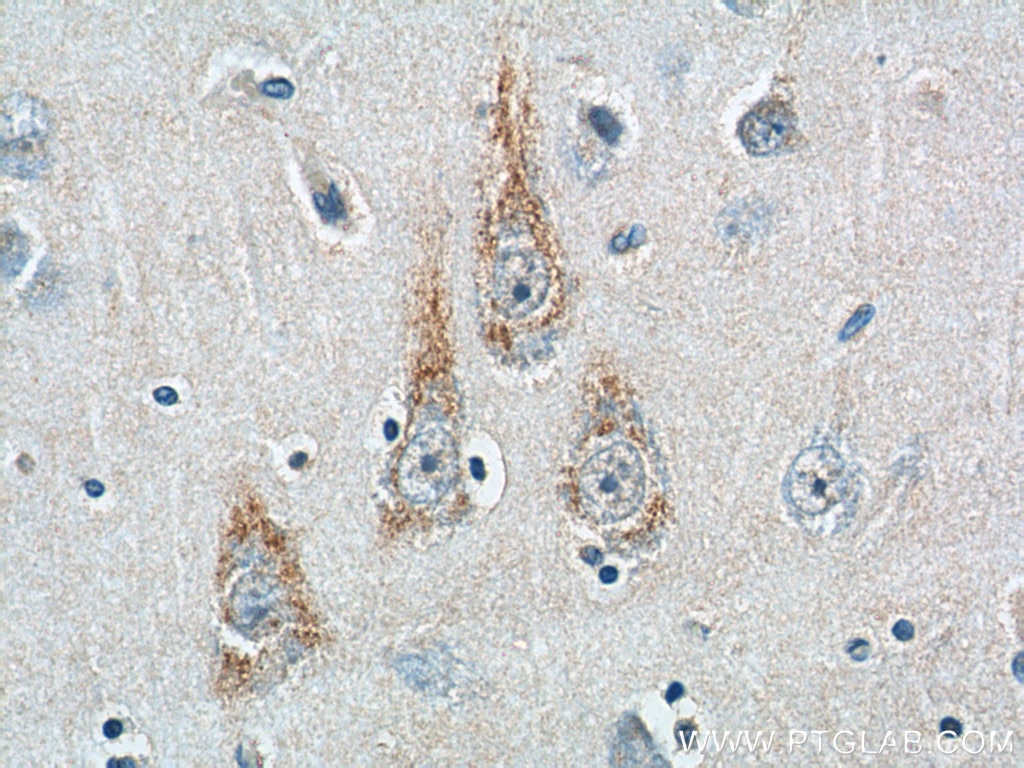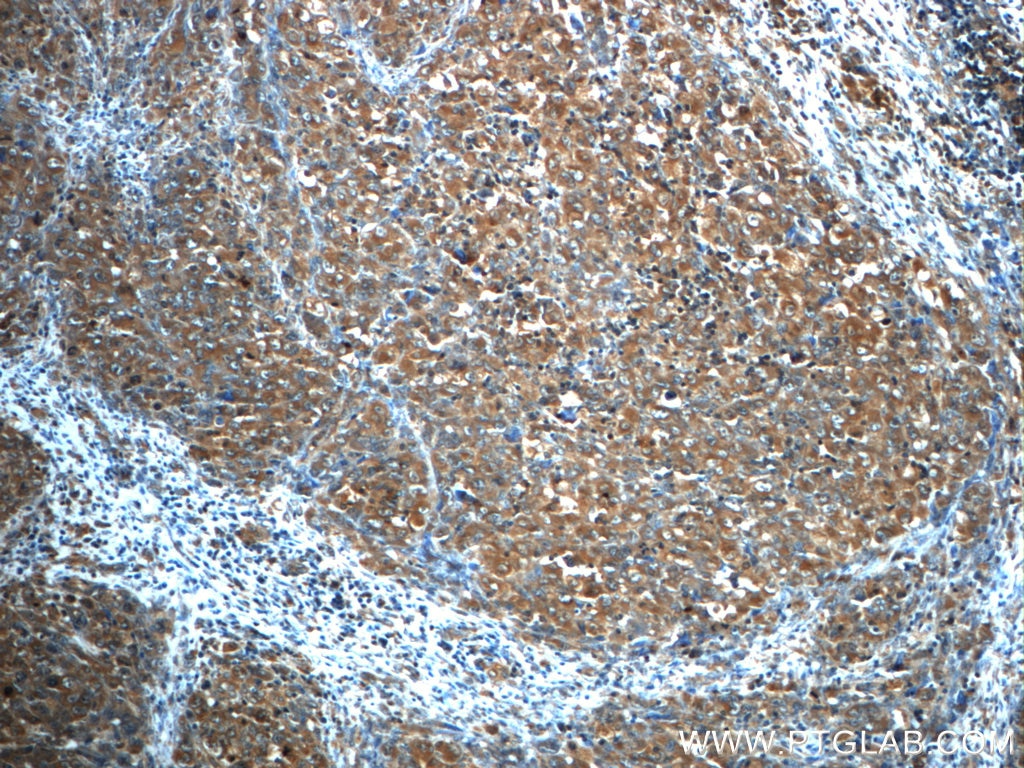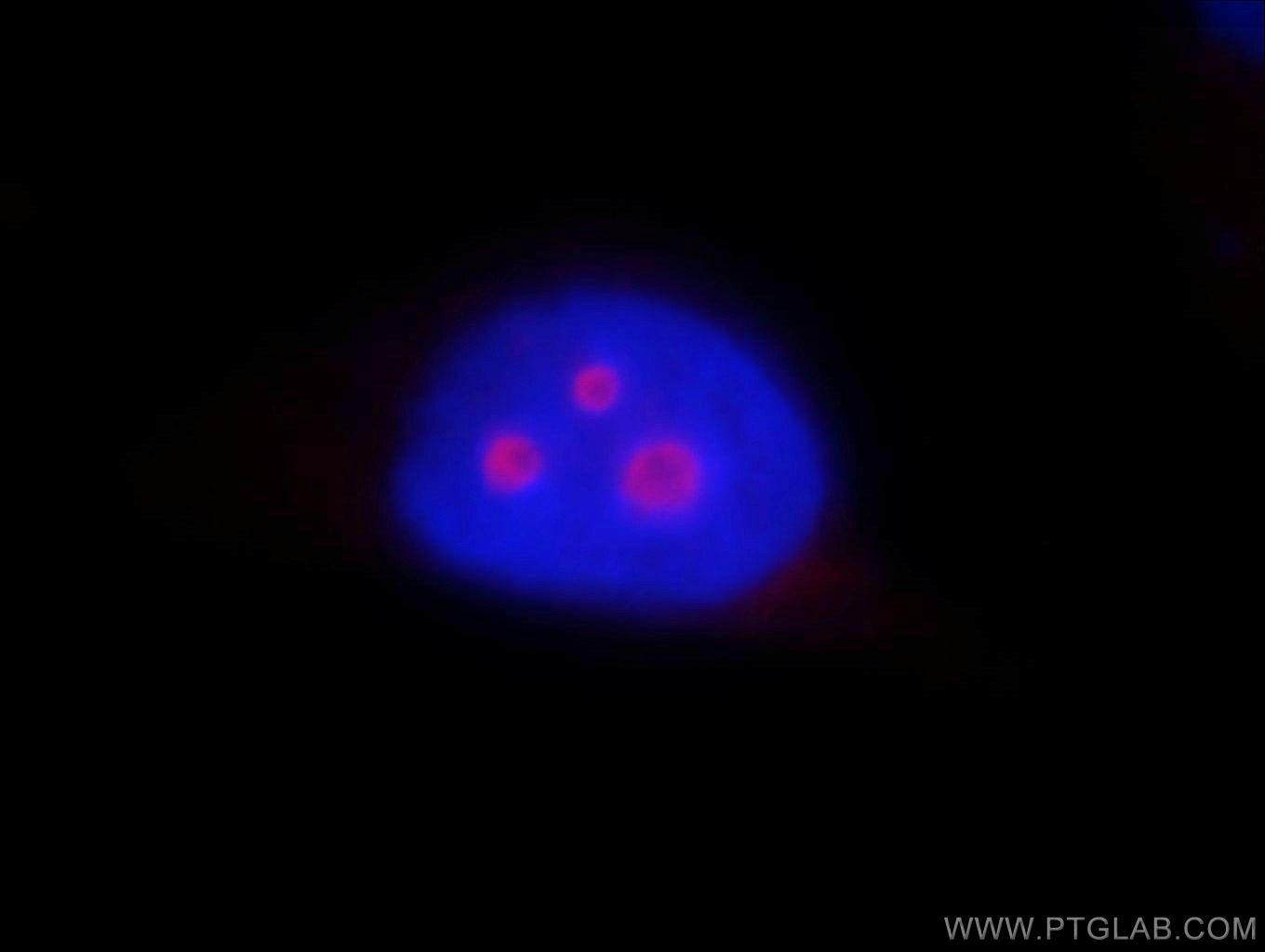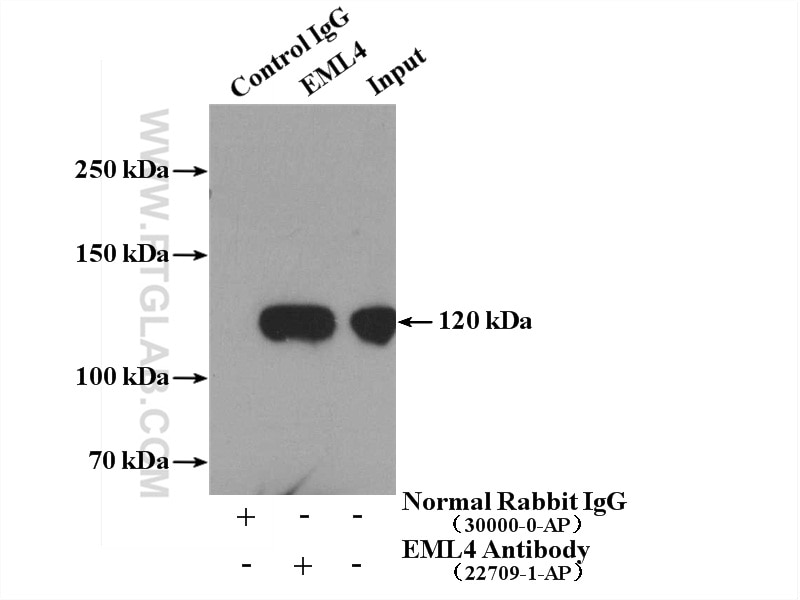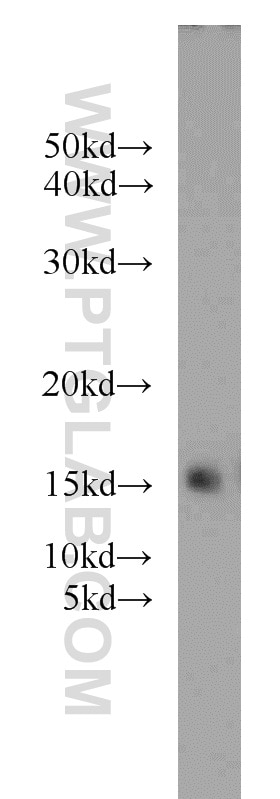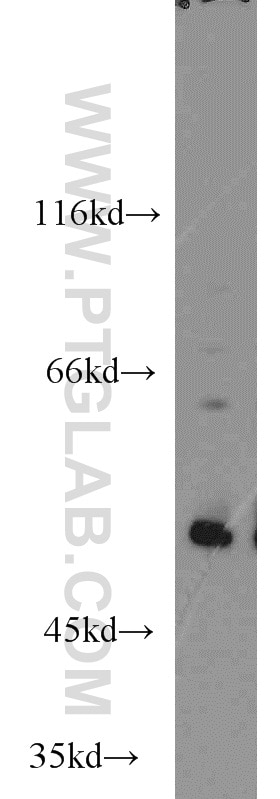Anticorps Polyclonal de lapin anti-ALK
ALK Polyclonal Antibody for WB, IHC, ELISA
Hôte / Isotype
Lapin / IgG
Réactivité testée
Humain
Applications
WB, IHC, ELISA
Conjugaison
Non conjugué
N° de cat : 24184-1-AP
Synonymes
Galerie de données de validation
Applications testées
| Résultats positifs en WB | cellules Jurkat, cellules MCF-7, cellules MG U-87 |
| Résultats positifs en IHC | tissu de lymphome humain, tissu cérébral humain il est suggéré de démasquer l'antigène avec un tampon de TE buffer pH 9.0; (*) À défaut, 'le démasquage de l'antigène peut être 'effectué avec un tampon citrate pH 6,0. |
Dilution recommandée
| Application | Dilution |
|---|---|
| Western Blot (WB) | WB : 1:500-1:1000 |
| Immunohistochimie (IHC) | IHC : 1:20-1:200 |
| It is recommended that this reagent should be titrated in each testing system to obtain optimal results. | |
| Sample-dependent, check data in validation data gallery | |
Applications publiées
| WB | See 2 publications below |
Informations sur le produit
24184-1-AP cible ALK dans les applications de WB, IHC, ELISA et montre une réactivité avec des échantillons Humain
| Réactivité | Humain |
| Réactivité citée | Humain |
| Hôte / Isotype | Lapin / IgG |
| Clonalité | Polyclonal |
| Type | Anticorps |
| Immunogène | ALK Protéine recombinante Ag21493 |
| Nom complet | anaplastic lymphoma receptor tyrosine kinase |
| Masse moléculaire calculée | 1620 aa, 176 kDa |
| Poids moléculaire observé | 180 kDa |
| Numéro d’acquisition GenBank | NM_004304 |
| Symbole du gène | ALK |
| Identification du gène (NCBI) | 238 |
| Conjugaison | Non conjugué |
| Forme | Liquide |
| Méthode de purification | Purification par affinité contre l'antigène |
| Tampon de stockage | PBS avec azoture de sodium à 0,02 % et glycérol à 50 % pH 7,3 |
| Conditions de stockage | Stocker à -20°C. Stable pendant un an après l'expédition. L'aliquotage n'est pas nécessaire pour le stockage à -20oC Les 20ul contiennent 0,1% de BSA. |
Informations générales
ALK, also named as CD246, is a receptor tyrosine kinase (RTK) that belongs to the protein kinase superfamily. ALK is usually found in the nervous system and appears to play an important role in the normal development and function of the nervous system. ALK was originally identified as part of the NPM (Nucleophosmin)-ALK oncogenic fusion protein, resulting from the (2;5)(p23;q35) translocation that is frequently associated with anaplastic large-cell lymphoma (ALCL). The EML4 (echinoderm microtubule-associated protein-like 4)-ALK fusion protein have been described in non-small-cell lung cancer (NSCLC), this transforming fusion kinase is a promising candidate for a therapeutic target as well as for a diagnostic molecular marker in NSCLC (PMID: 17625570).
Protocole
| Product Specific Protocols | |
|---|---|
| WB protocol for ALK antibody 24184-1-AP | Download protocol |
| IHC protocol for ALK antibody 24184-1-AP | Download protocol |
| Standard Protocols | |
|---|---|
| Click here to view our Standard Protocols |
Publications
| Species | Application | Title |
|---|---|---|
Oncol Rep DEK promotes the proliferation and invasion of lung cancers and indicates poor prognosis in lung adenocarcinomas. | ||
Antiviral Res Chromatin binding protein HMGN1 promotes HBV cccDNA transcription and replication by regulating the phosphorylation of histone 3 |
